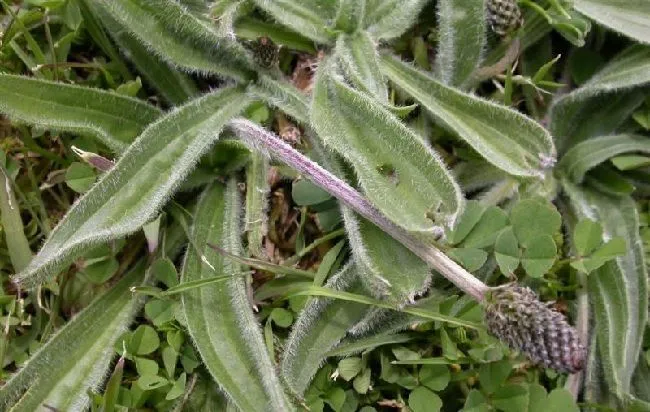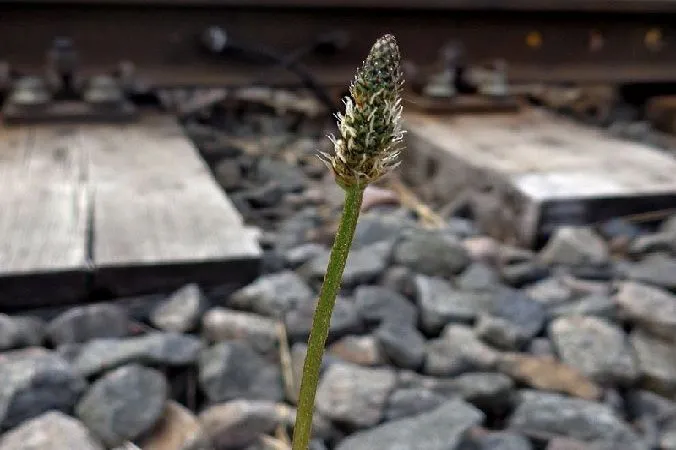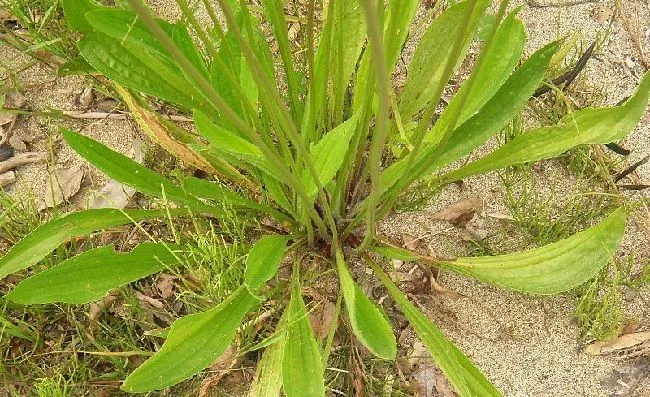Although many times we talk about cultivated plants that it is necessary to fertilize, water and care, Plantago lanceolata behaves totally differently. Simply by seeing it in a photograph, we know that it is a rustic plant, without ornamental characteristics, but with incredible potential as a medicinal plant.
Table of Contents
Plantago lanceolata, a rustic and forgotten plant
In fact, the Ribwort plantain (Plantago lanceolata) we can find it on roadsides, and roads growing on rocky terrain. It has a great ability to survive and practically does not need water to survive.
Belonging to the family Plantaginaceae a not very common family that includes around 2000 species. Its natural cultivation extends over numerous areas, including all of America (North and South), Europe, and Asia.
It does not have special conditions of growth or climate (as you can see, it grows in practically the whole world), and in Spain, it has been observed and identified in different types of soils and areas, both calcareous, stony, roadsides, etc.

Its vulgar name varies from the area where it is located, although in the area of Europe it is known as Ribwort plantain and in America as seven veins (in Chile, especially).
Other known names:
- Narrowleaf plantain
- Ribleaf
- English plantain
- Buckhorn
- Lamb’s tongue
The term Plantago comes from the gender to which it belongs, within the family Plantaginaceae it is home to around 250 species. The term lanceolata is not surrounded by historical curiosities and is simply defined by the shape of its leaves.
Pests and diseases
Despite being a rustic medicinal plant and native to many areas, it can be affected by some pests and diseases. In the subject of insects, it is common to see Lepidoptera on it, where future nymphs or larval states will feed on it.
Some insects specific to Plantago:
- Junonia coenia
- Spilosoma congrua
- Melitaea cinxia
In diseases, the best-known fungus is odium (Podosphaera plantaginis) can be installed on the leaves, appearing in lesions on the leaves and stem when humidity conditions increase.
Some subtypes of Plantago are tolerant to the disease.
You may be interested in our article about the 7 Clear Symptoms of Copper Deficiency
Know all the properties of Plantago lanceolata
Active ingredients of Plantago lanceolata
As we all know, it is the active ingredients that, in their perfect composition, are able to offer us calming and healing power.
In this case, when talking about the Ribwort plantain, we have to highlight the main active ingredients:
- Aceosoide (verbascoside)
- Phenylethanoloids
- Cistanoid
- Plantamajoside
- Isoacteoside
- Iridoid glycosides (aucubin and catalpol).
- Allantoin
- Polysaccharides (plantaglucida, glucomannon)
- Salicylic acid
Many of them sound like Chinese to us, and with all the reason in the world. However, below we see what they are really capable of doing.
Nutritionally, it has great antioxidant properties, derived from its concentration of calcium, iron, and vitamins A, C, and K.

The most commonly used parts used as a medicinal remedy are its leaves, stems, and especially its seeds. In general, the area part.
The leaves are collected during the flowering season (when the inflorescence of the previous image is seen) and can be used both fresh and dried.
Plantago lanceolata is indicated to relieve or treat the following problems and diseases:
- Used in decoction, as a fluid extract or syrup, it serves as a remedy against colds, asthma, and bronchitis.
- Used by gargles, Plantago lanceolata relieves the symptoms of angina.
- By combining this medicinal plant with others of recognized benefit for the skin, such as wax and olive oil, it is a powerful skin regenerator, healing and treating and disinfecting wounds derived from burns, blows, scratches, etc.
- It has anti-inflammatory properties (such as moringa), so it is used recognizably against otitis, insect bites, and other common inflammations. In the case of the otitis, crushing the leaves and extracting the juice, applied to the ear, manages to soothe the pain and reduce inflammation.

The greatest historical reputation of Plantago lanceolata Lies in its properties to heal wounds, scarring, damage by chips and punctures (very common in previous times), and burns. It acts as an anti-irritant, anti-inflammatory, and local pain relief in open or closed wounds.
In long-term treatments, it can also be used to treat eczema, psoriasis, and the maintenance of first-degree burns.
It can also be used, by infusion of dried leaves, to improve digestion. It is considered useful against diarrhea, colitis, and gastritis, along with other stomach ailments, due to its high concentration of tannins and astringents.
Likewise, continuous consumption by means of infusions improves intestinal transit, regulates heartburn, and reduces irritability or inflammation of the stomach.
The consumption of large quantities of its seeds produces a laxative effect.
You may be interested in our article about the 10 Benefits of Purple Basil
Suggestions for using Plantago lanceolata
There are three ways to get the medicinal properties of Ribwort plantain.
- Boiling the dried leaves extracted from the plant. We cook them for 10-15 minutes and use them topically on wounds, gargles (angina), etc.
- Infusion. Through tea with the extract of the medicinal plant, a medium leaf for each volume of infusion, reducing the symptoms of colds, asthma, and colds.
To prepare an infusion, 1-3 grams (2 tablespoons of coffee) of dried or powdered leaves are selected for 200-300 ml of water. It is brought to a boil and can be taken at most 3 cups a day.
Fresh leaves can be applied directly, several times a day, to treat minor wounds, dermatitis, and insect bites.
Contraindications
No major contraindications have been detected in the consumption of Plantago. As usual, the intake of any medicinal plant, including this one, is usually limited to non-pregnant women, previously consulting with a medical specialist and nutritionist.
